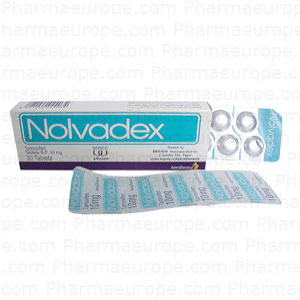
New guidelines emphasize use of aromatase inhibitors, whether alone or sequentially with tamoxifen.
Based on findings published since 2004, the American Society of Clinical Oncology (ASCO) has updated its previous guidelines (JW Womens Health Apr 6 2005), focusing on optimal adjuvant endocrine strategies involving tamoxifen, aromatase inhibitors (AIs), or both in sequence. Highlights of the new guidelines are as follows:
- To lengthen disease-free survival and lower risk for recurrence (i.e., locoregional or distant recurrence or contralateral breast cancer), postmenopausal women with hormone receptor–positive breast cancer should consider an AI, either as primary adjuvant therapy for ≤5 years or sequentially after 2 to 3 years of tamoxifen to yield a total of 5 years of adjuvant endocrine therapy. Women who discontinue initial AI therapy before 5 years should consider using tamoxifen to bring the total duration of adjuvant therapy to 5 years.
- Women who have completed 5 years of adjuvant tamoxifen therapy can benefit from switching to an AI. This extended therapy should not exceed 5 additional years.
- ASCO does not recommend using specific markers to choose optimal adjuvant therapy.
- Because of drug interactions, caution is recommended when tamoxifen and CYP2D6 inhibitors (e.g., paroxetine, fluoxetine, bupropion) are used concomitantly.
- When advising women about adjuvant therapy, clinicians should consider the adverse effect profiles of tamoxifen (venous thromboembolism and endometrial cancer, polyps, and hyperplasia) and AIs (osteoporosis, fractures, and arthralgias). Switching from tamoxifen to an AI (or vice versa) might be appropriate if adverse effects become intolerable or precipitate nonadherence.
- Clinically important differences have not been shown among currently marketed AIs. Postmenopausal patients who cannot tolerate a particular AI should consider switching to a different AI or to tamoxifen.
- Women who are premenopausal or perimenopausal at diagnosis should be treated with 5 years of tamoxifen.
Comment: These guidelines advocate the incorporation of AIs (whether sequentially with tamoxifen or alone) into adjuvant endocrine therapy for postmenopausal women who have hormone receptor–positive breast cancer. Women's health clinicians should monitor bone-mineral density at baseline and during therapy with AIs and should recognize that bisphosphonates can mitigate skeletal health concerns associated with AIs. Clinicians also should recognize that, although tamoxifen's risk-benefit profile is better in women who have undergone hysterectomies, absolute risks associated with tamoxifen are higher in obese women because of their elevated baseline risk for thromboembolism. Depression is common in breast cancer survivors. When helping tamoxifen users choose antidepressant therapy, clinicians should keep in mind that venlafaxine — a weak inhibitor of CYP2D6 — might be a more appropriate choice than paroxetine or fluoxetine, which potently inhibit CYP2D6 (JW Womens Health Mar 4 2010 and JW Womens Health May 13 2010). As longer-term follow-up data on adjuvant therapy for breast cancer are published, evolving ASCO guidelines will continue to optimize decisions that benefit women with this common malignancy.





 留言列表
留言列表
 線上藥物查詢
線上藥物查詢 